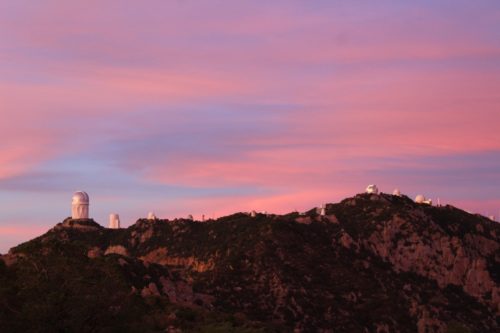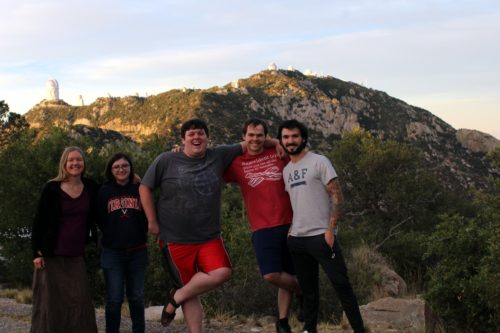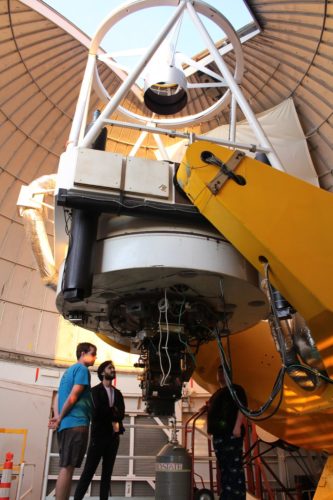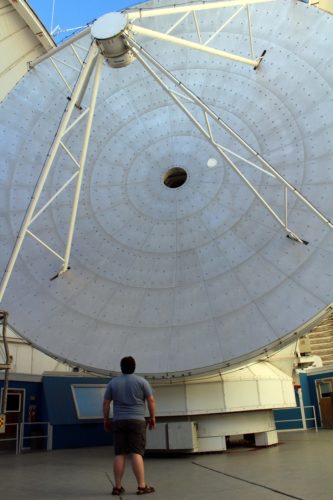
The Milky Way provides a template to study galaxy formation and evolution across cosmological times, essentially giving astronomers a fossil record of the history of star formation and accretion. The structure of the Milky Way’s inner region, known as the Galactic Bulge, is an unsettled topic in astronomy, but variable stars called RR Lyrae reveal structures within the galaxy.
A pilot survey of RR Lyrae stars done by Saint Martin’s University yielded evidence of a small structure in the Galaxy’s center. The university recently approached the Murdock Trust with a proposal to further study this intriguing structure in order to obtain a complete picture of the formation of the oldest innermost regions of the Milky Way and a window into the initial conditions of galaxy formation.
In May, a group of Saint Martin’s University students, supported by a grant through the Murdock Trust Natural Sciences program, had the opportunity to travel to Kitt Peak National Observatory, located in the Quinlan Mountains of the Sonoran Desert in Arizona. The students stayed up all night to use the 2/4m Hiltner Telescope located at the observatory to gather photos of stars in the Galactic Bulge. They are now back at the university and working hard on analyzing their observations.
Not only was this a valuable research opportunity for furthering the study of our galaxy’s formation, but it provided one-of-a-kind experiences for students. For one of the students in the group, it was their first time flying and first time traveling beyond Oregon and Washington. This grant provided the resources for students to expand their horizons, not only scientifically, but also educationally and personally.
The Murdock College Research Program for Natural Sciences is designed to support research in the natural sciences at private, predominantly undergraduate colleges and universities in the Trust’s funding region. To learn more about the program, visit our website.

Students take part a unique research experience through the Murdock Trust’s Natural Sciences program. 
Researchers cool the spectrograph to -315 Fahrenheit. The cooler an instrument, the less electronic noise, resulting in better photos of stars and better measurements. 
A student observes the 12m radio telescope at Kitt Peak.







